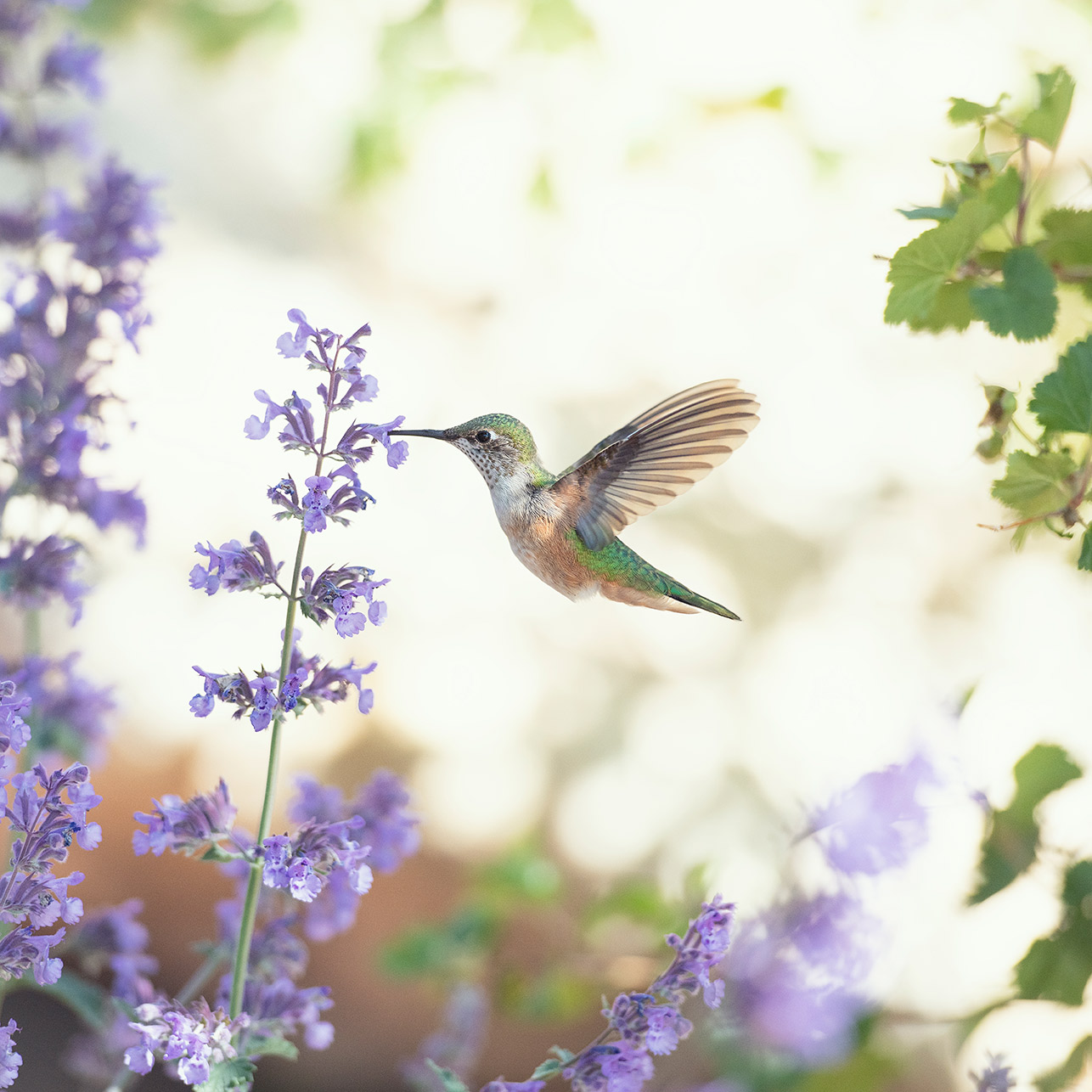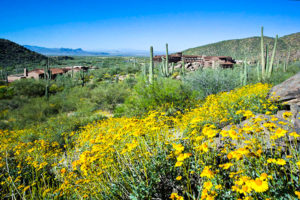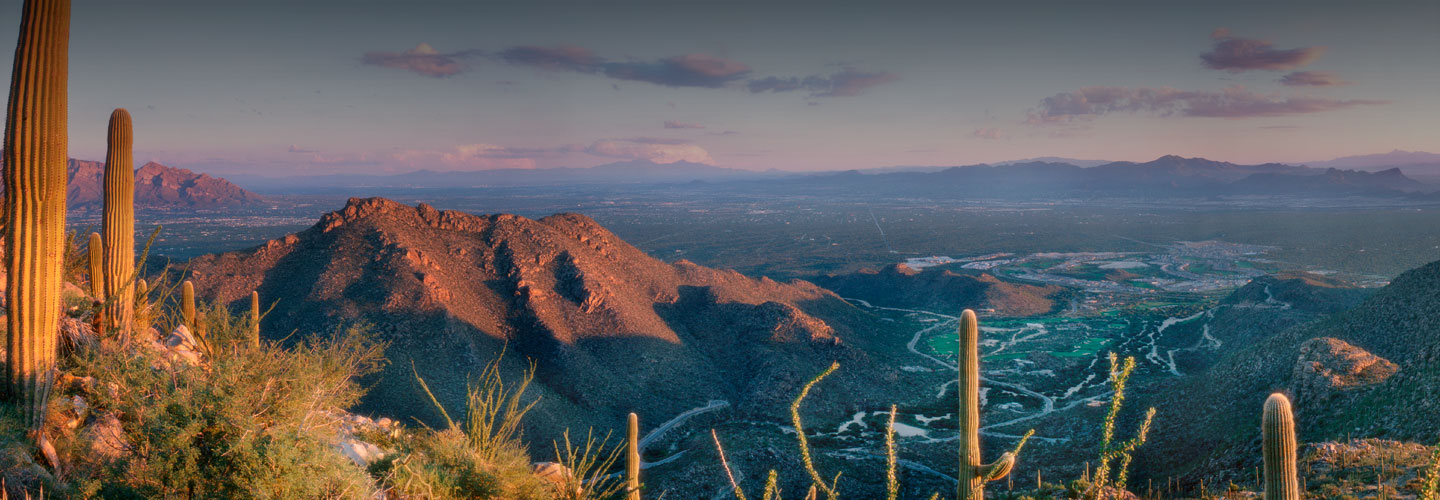
Hummingbird Nesting Season is Right Around the Corner
There are few things as fascinating as watching a hummingbird make a nest. The females dart up, down, sideways and backwards gathering materials to build sturdy little nests that stretch enough for two peanut-sized eggs.
Among the material she’ll use are leaves, sticks, bark, lichens, dried flower petals, and even yarn and hair if it’s handy. The finishing touch is spider silk to bind and tie the nest together.
 A great place to view hummers.
A great place to view hummers.
With 15 species of hummingbirds in Southern Arizona, more than you’ll find in any other part of the United States, many native hummingbirds start building nests in April. Dove Mountain residents often find these tiny nests hidden in their landscapes or upon branches at a local parks or along trails.
A bit about our birds.
Broad-billed Hummingbirds begin building their nests in April. The female looks for a horizontal limb, three to nine feet above ground, protected from wind and rain and hidden from predators. She’ll lay two to three white eggs that incubate for 14 to 21 days. Then 18 to 28 days later the hatched little ones are ready to venture out of the nest.
Black-chinned Hummingbirds are exceptionally widespread, found from deserts to mountain forests. They generally start constructing nests in April. Typically, their nests are six to 12 feet above the ground, often on an exposed small dead branch below the tree canopy. Two white eggs are common and hatch in 12 to 16 days. The nesting period is about 21 days.
Costa’s Hummingbirds build nests three to seven feet above the ground during late winter and spring, choosing sparsely leaved shrubs, small trees, cactus and yucca to locate small grayish looking nests. Females frequently place the nest, which takes four days to build, in relatively open areas without much vegetation cover. They occasionally build a new nest on top of one from a previous season. Incubation lasts 15 to 18 days with hatchlings leaving the nest at 20 to 30 days.
Broad-tailed Hummingbirds arrive in late winter to early spring to nest, even when cold air often descends into mountain valleys dropping temperatures to below freezing. The nesting female uniquely copes with these temperature extremes by building a well-insulated nest and entering a state of decreased physiological activity. Typically, the female lays two white eggs with an incubation period of 16 to 19 days and a nestling period of 21 to 26 days.
Anna’s Hummingbirds start nesting in late November and again in the spring. The nest site varies from branches to shrubs, vines, wires and under eaves, and generally are four to 25 feet above ground. Unlike other hummingbird females, the Anna’s have a tiny red patch of color on their throat. The female lays two white eggs in two to three broods each year. The incubation period is around 16 days and hatchlings generally leave the nest at 20 days.

Natives to the east.
Other native hummingbirds found in Southeastern Arizona include:
- Berylline Hummingbirds — shimmery green feathers and iridescent, purple-tinted tail feathers.
- Blue-throated Hummingbirds — dull green with white stripes behind the eyes and the male has a gorgeous blue throat patch (gorget).
- Magnificent/Refulgent Hummingbirds — the male has metallic green throat and black chest and a purple forehead and crown.
- Lucifer Hummingbirds — the male has a glossy magenta to violet-blue throat patch.
How we attract hummers to our yards.
In Dove Mountain, we attract hummingbirds to our yard by providing fresh nectar in feeders and planting desert-loving shrubs like autumn sage, desert honeysuckle, flame acanthus, Baja fairy dusters, penstemon, yellow bells, yucca and desert willow trees within the landscape or in pots. To learn more about hummingbird habitat, visit the Tucson Audubon Society and be sure to check out the Patagonia, Ariz., Paton Center with its 24/7 webcam.
